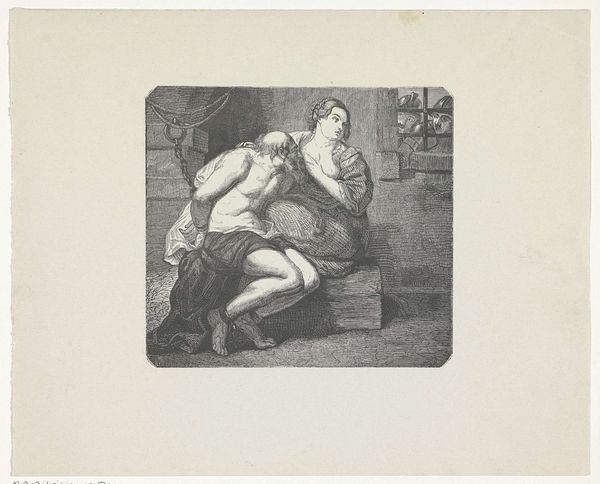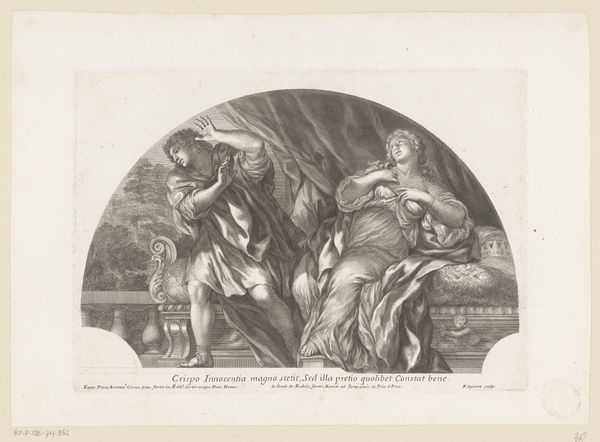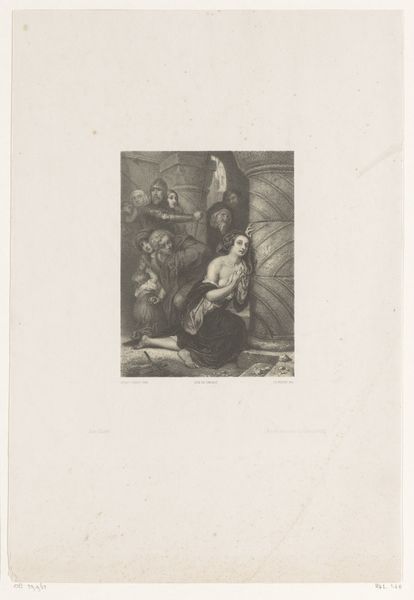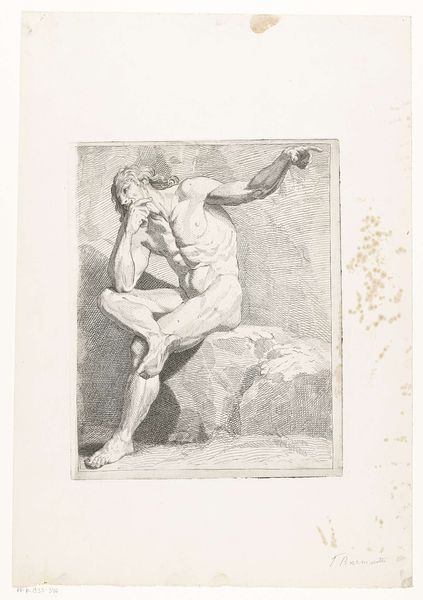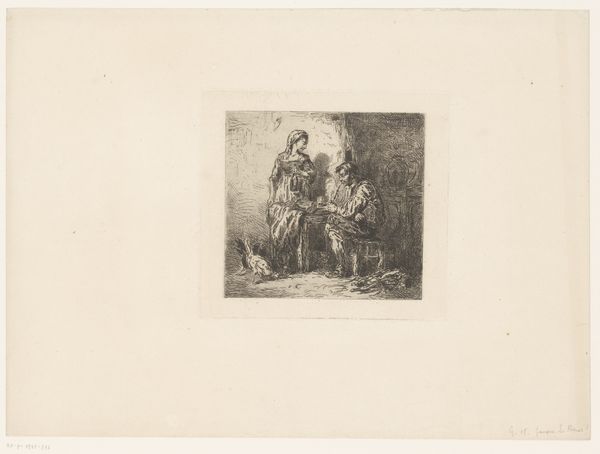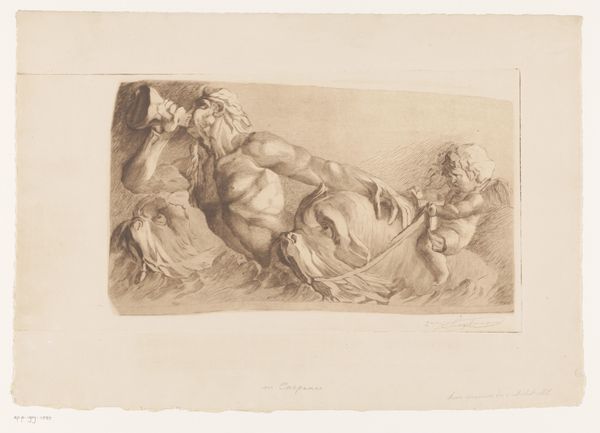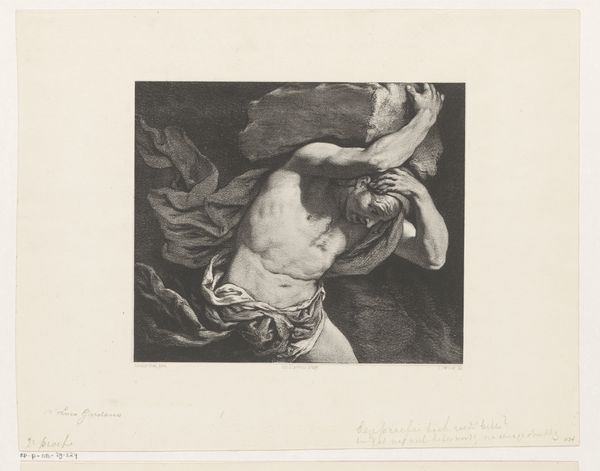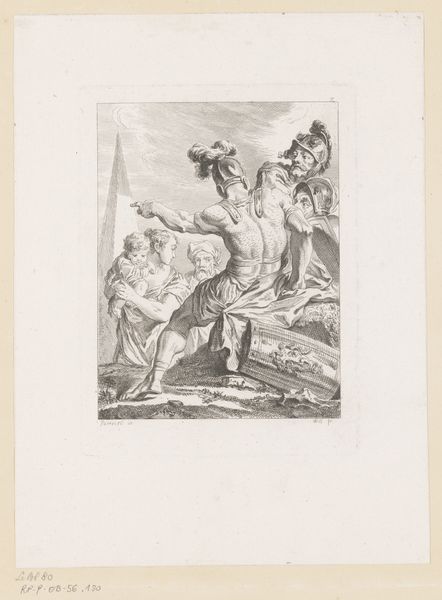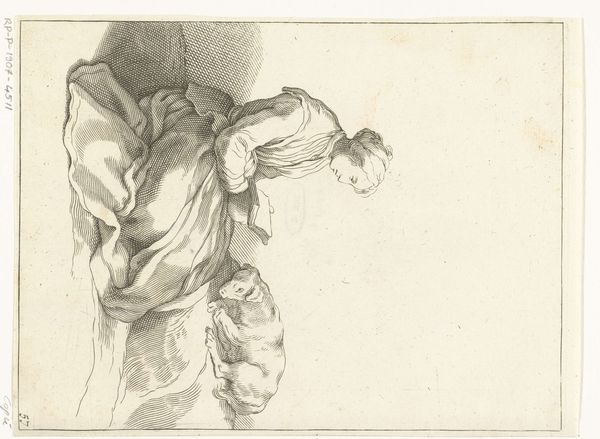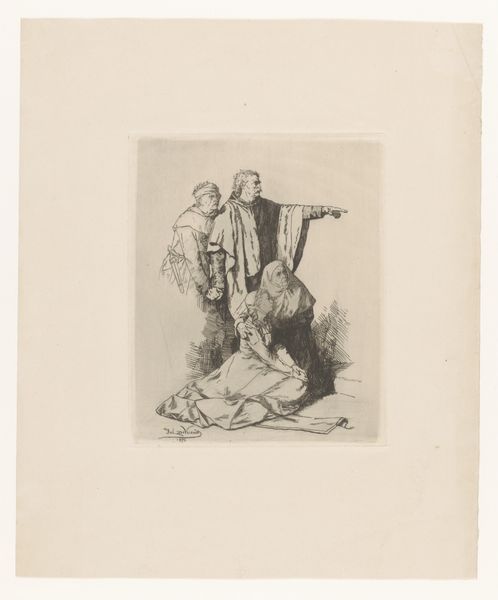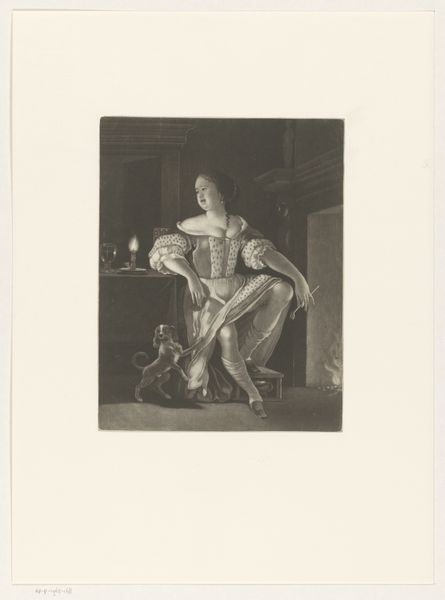
drawing, print, paper, engraving
#
pencil drawn
#
drawing
#
aged paper
#
toned paper
#
light pencil work
# print
#
pencil sketch
#
figuration
#
paper
#
line
#
genre-painting
#
history-painting
#
academic-art
#
nude
#
engraving
Dimensions: height 270 mm, width 360 mm
Copyright: Rijks Museum: Open Domain
Curator: Here we have a print entitled "Cimon en Pero," dating approximately from 1809 to 1899 and currently residing in the Rijksmuseum's collection. The medium appears to be an engraving, perhaps after a drawing. Editor: It's incredibly somber, isn't it? The limited tonal range and somewhat softened lines give it an almost dreamlike quality, despite the rather stark subject matter. The composition centers on two figures intimately posed within what looks like a prison cell. Curator: The legend depicted here – known as Roman Charity - tells the story of Cimon, condemned to death by starvation. His daughter, Pero, visits him in prison and keeps him alive by breastfeeding him. The power dynamic inherent in their relationship and the explicit staging prompts a conversation on power and sacrifice, which I find incredibly relevant even today. Editor: Absolutely. And notice the way the engraver utilized line work. The chains binding Cimon, the coarse texture of what looks like straw on the floor, these material signifiers amplify his powerlessness. In contrast, the lighter strokes used for Pero's garment almost illuminate her as an instrument for life itself. It really heightens the visual tension between entrapment and freedom. Curator: I find it so interesting to note how this narrative has been visualized throughout art history, shifting emphasis in tune with broader social and cultural ideologies. Editor: For sure! Consider this piece within conversations around women’s roles – the nurturing, maternal archetype vis-a-vis political and social constraints on women. And then layered onto that, the erotic undercurrent, particularly viewed through the lens of male artistic interpretations across centuries. It speaks volumes about shifting gendered expectations. Curator: This piece also invites us to examine the economics of artistic production, think about where and by whom it was made. Understanding its material existence offers insight into how and why this image was made and disseminated to a broader public. Editor: Agreed. And examining it now, through a contemporary lens, what meaning can we extrapolate? Curator: Well, reflecting on it, this image prompts an examination of the various facets of compassion – what does it mean to nourish, sacrifice, and sustain? Editor: Yes, and that extends to the complex, and sometimes fraught, intersections of love, obligation, and power, laid bare within the confines of a prison cell.
Comments
No comments
Be the first to comment and join the conversation on the ultimate creative platform.
